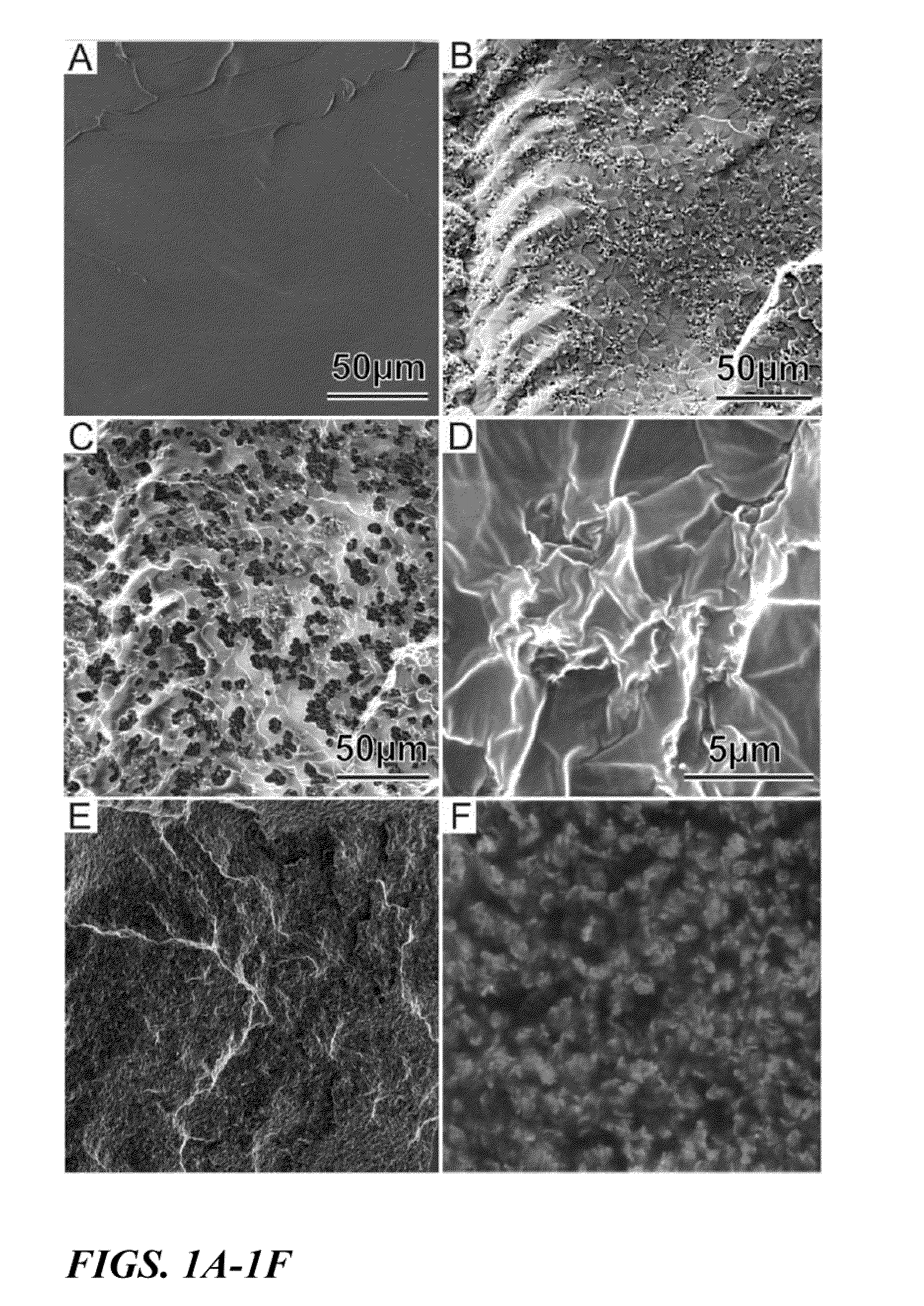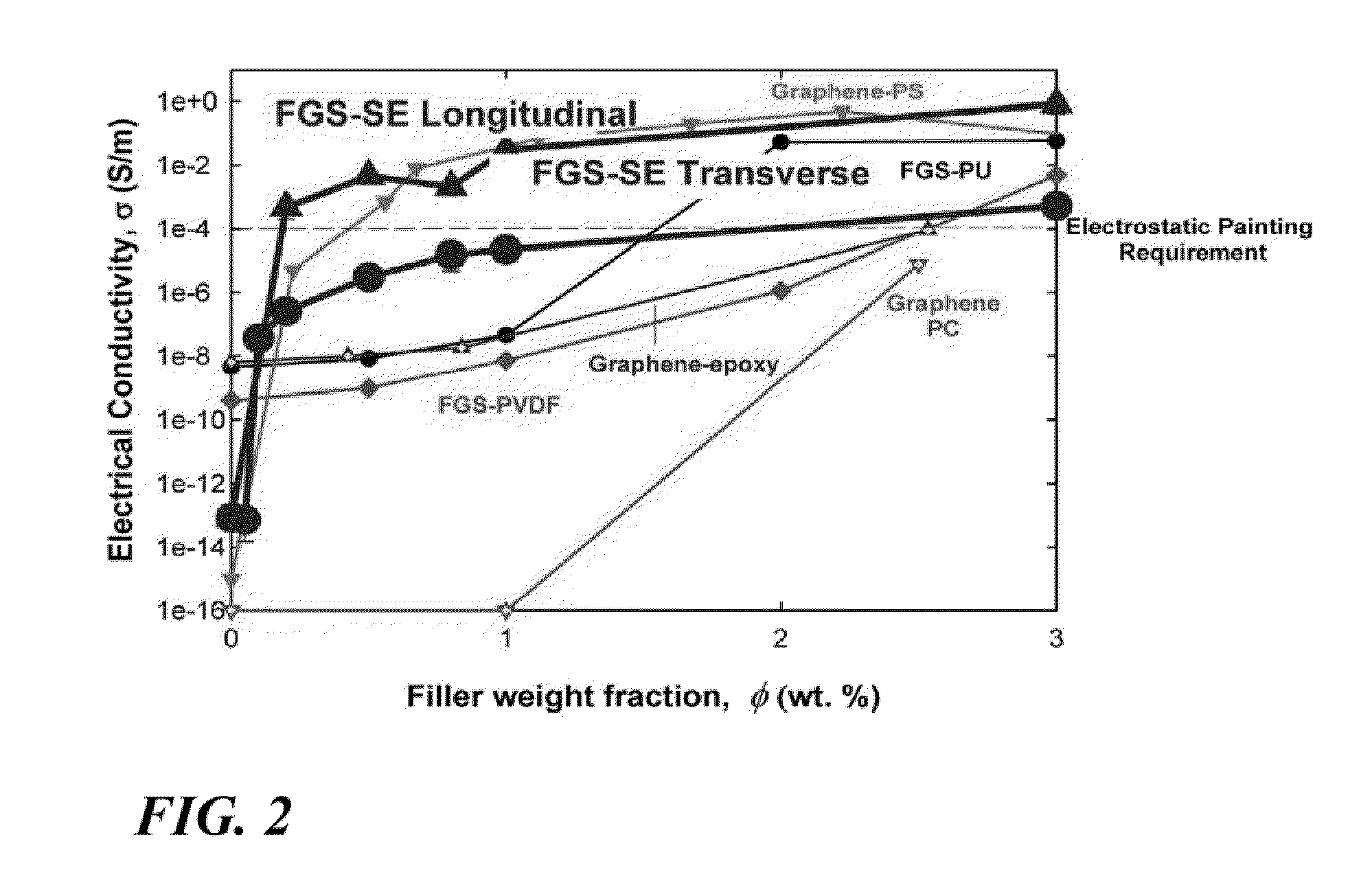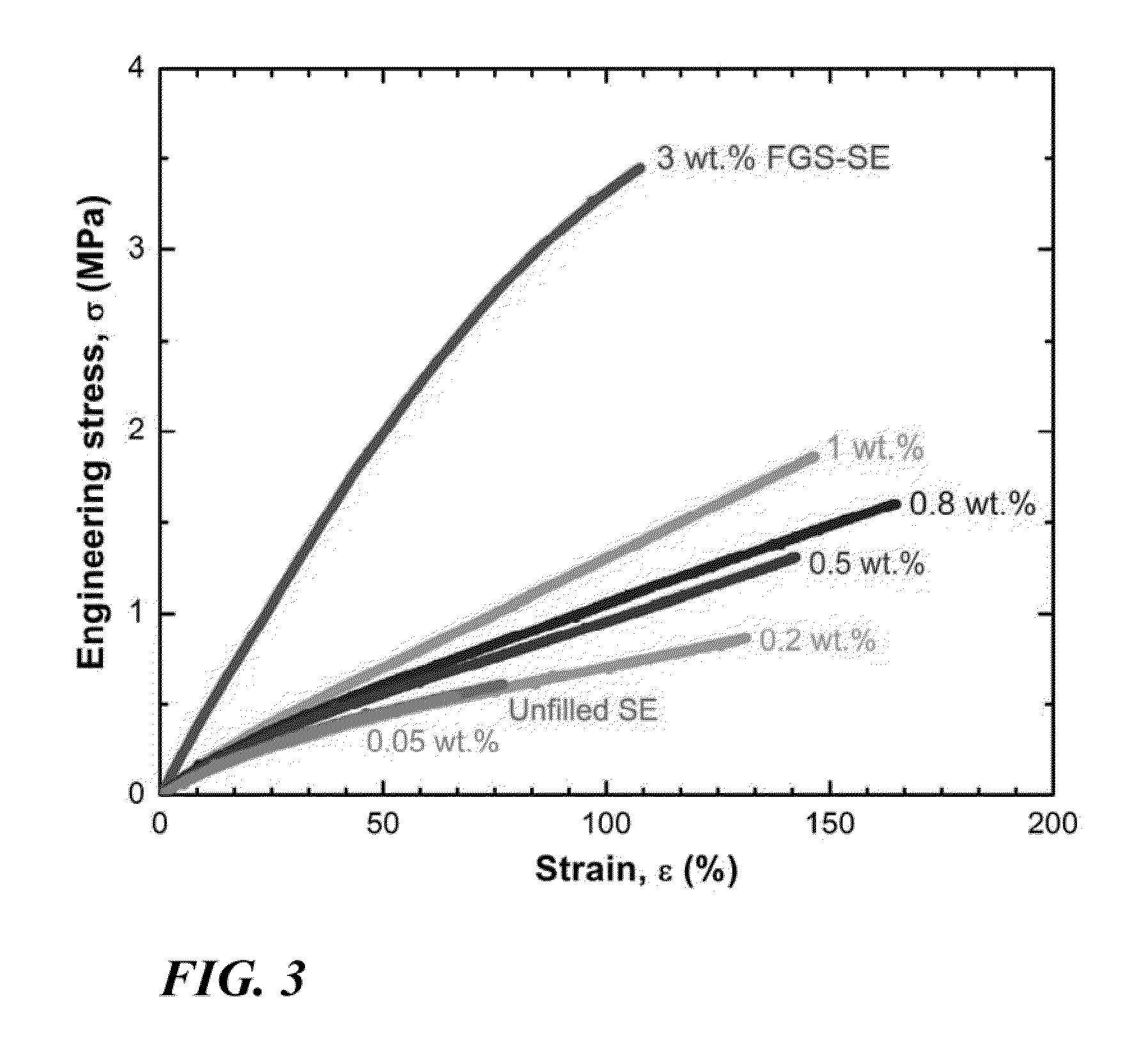Multifunctional graphene-silicone elastomer nanocomposite, method of making the same, and uses thereof
a graphene-silicone elastomer and nanocomposite technology, applied in the field of nanocomposites, can solve the problems of increasing the elongation at break, the dilation effect of fibers, and the inability to fully understand the effect of initial filler agglomerates on the mechanical properties of composites, etc., to achieve the effect of reducing the permeability of gas, and reducing the permeability
- Summary
- Abstract
- Description
- Claims
- Application Information
AI Technical Summary
Benefits of technology
Problems solved by technology
Method used
Image
Examples
Embodiment Construction
[0038]The present invention involves the addition of functionalized graphene sheets (FGS) to silicone elastomer. Within the context of the present invention the term “silicone elastomer” is used to refer to any of a variety of elastomeric modified silicone polymers as distinct from unmodified polydimethylsiloxane (PDMS). The invention has higher modulus, strength, failure strain, electrical conductivity and lower gas permeability than the unfilled silicone elastomer. The current invention introduces new applications for silicone elastomer, such as electrically conductive and low-permeability coating, adhesive and sealants, as well as flexible electrodes, actuators, pressure sensor, printed circuits and electromagnetic interference shielding material.
[0039]The FGS-silicone elastomer nanocomposite of a most preferred embodiment of the present invention simultaneously has superior mechanical, electrical and barrier properties compared to unfilled silicone elastomers. Furthermore, the c...
PUM
| Property | Measurement | Unit |
|---|---|---|
| temperature | aaaaa | aaaaa |
| time | aaaaa | aaaaa |
| time | aaaaa | aaaaa |
Abstract
Description
Claims
Application Information
 Login to View More
Login to View More - R&D
- Intellectual Property
- Life Sciences
- Materials
- Tech Scout
- Unparalleled Data Quality
- Higher Quality Content
- 60% Fewer Hallucinations
Browse by: Latest US Patents, China's latest patents, Technical Efficacy Thesaurus, Application Domain, Technology Topic, Popular Technical Reports.
© 2025 PatSnap. All rights reserved.Legal|Privacy policy|Modern Slavery Act Transparency Statement|Sitemap|About US| Contact US: help@patsnap.com



